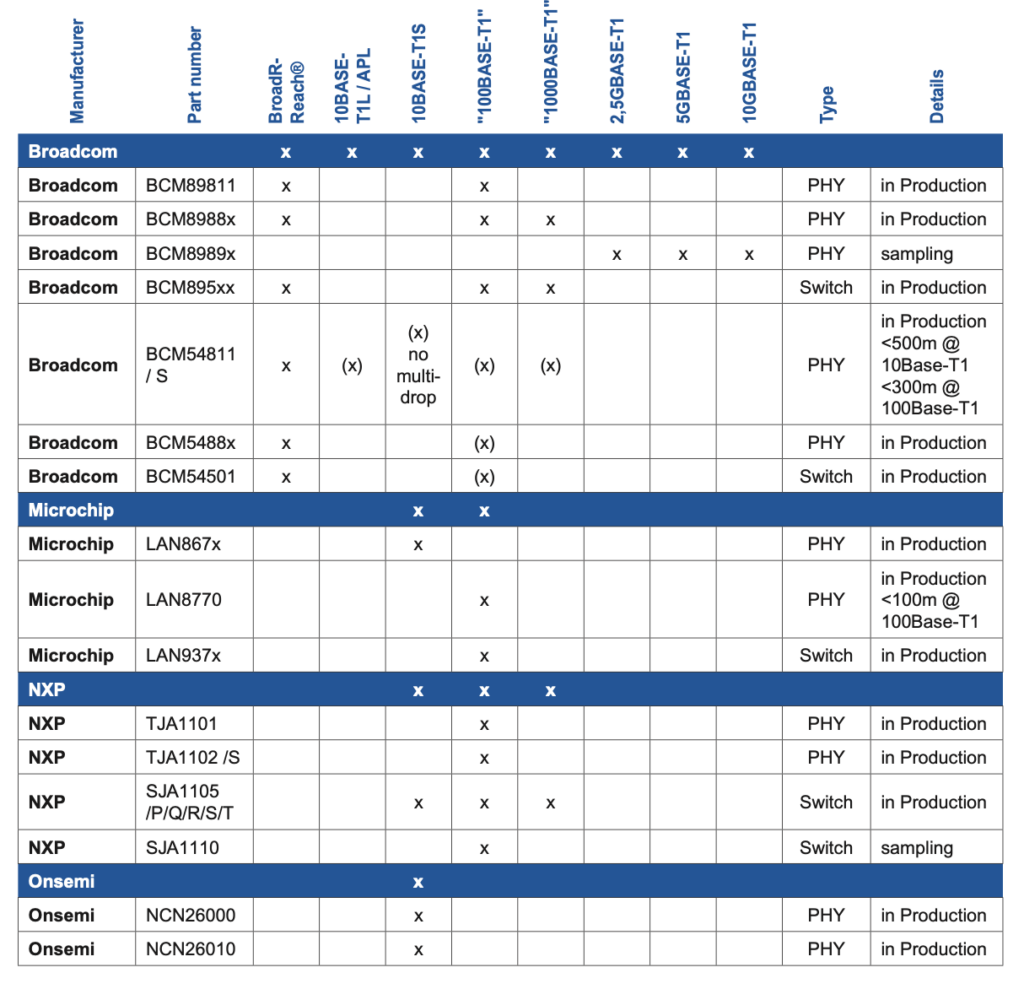
Single Pair Ethernet (SPE) is proving beneficial to a broad cross section of different application areas. In industrial IoT, it is enabling seamless and scalable connectivity from devices at the edge all the way back to the cloud. Elsewhere, it is seeing uptake in home and building automation infrastructure, as well as in-vehicle networking.
By streamlined conventional Ethernet requirements, SPE is able to overcome the acute space, weight and budgetary constraints that are associated with such applications. Echo-cancellation mechanisms mean that the need for multiple conductor pairs can be avoided, with data transfer across just one conductor pair being made possible. Consequently, the cabling involved can be much lighter, more compact and have a lower overall cost.
Emerging out of the BroadR-Reach® networking technology originally developed by Broadcom, SPE has continued to evolve over the course of the last decade. New specifications have been introduced that are better aligned with prospective use case scenarios. 100BASE-T1 is able to handle full-duplex point-to-point communication at 100Mbps speeds over 15m cable lengths, with the arrival of 100BASE-T1 taking the data rates supported across that distance up to 1Gbps.
Further specifications have followed, with 10BASE-T1L supporting 10Mbps over 1km and the multi-drop capabilities of the shorter reach 10BASE-T1S meaning numerous nodes can be connected to each cable. In addition, the Power over Data Line (PoDL) specification allows both data and power (a maximum of 50W) to be supplied simultaneously – similar to what Power over Ethernet (PoE) does for multi-conductor Ethernet cabling.
EBV offers an extensive portfolio of devices to facilitate SPE design implementation. This comprises PHYs and switch ICs from the leading manufacturers – Microchip, onsemi, NXP and Broadcom – with all the key protocols being addressed. Customers can quickly gain access to these devices, and they are backed up by in-depth technical support from our application engineering team. As a result, customer SPE projects can be completed within significantly shorter timeframes. Further information on EBV’s SPE portfolio is shown in the following table.
Table 1: The comprehensive SPE portfolio available via EBV
Thanks to close relationships with the device manufacturers mentioned in this table, EBV has full visibility of these companies’ respective long-term technology roadmaps regarding SPE. In addition, EBV is involved in industry groups that are helping to encourage SPE adoption, as well as making valuable contributions to defining the future standards and specifications that this technology will encompass.
For more information, visit: www.ebv.com

